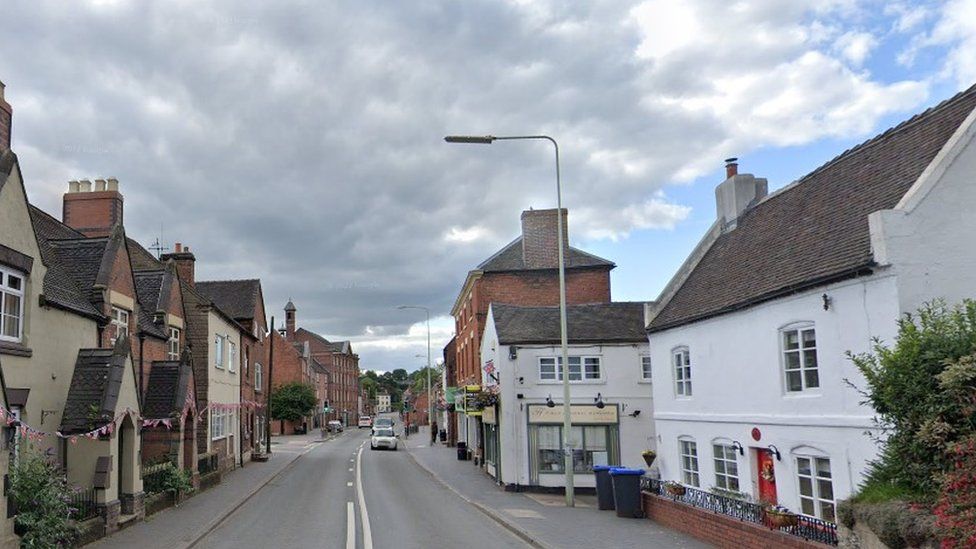
The quake’s epicentre was in Tean, Staffordshire, confirmed the British Geological Survey
By Susie Rack & Lee Blakeman
BBC News, West Midlands
Residents reported “rumbling” and rattling windows and doors after a 3.3 magnitude earthquake hit Staffordshire on Wednesday evening.
The British Geological Survey (BGS) said the tremor’s epicentre was 7.3km (4.5 miles) below Tean.
It is the largest of 21 earthquakes to strike the UK in the past two months.
The BGS said people had reported “an initial rumbling, then a bang” with what “felt more like a shunt, like something had hit something”.
People as far as 20km (12.5 miles) from the epicentre took to social media to describe the effects.
This Twitter post cannot be displayed in your browser. Please enable Javascript or try a different browser.View original content on Twitter
The BBC is not responsible for the content of external sites.
Skip twitter post by British Geological Survey
Allow Twitter content?
This article contains content provided by Twitter. We ask for your permission before anything is loaded, as they may be using cookies and other technologies. You may want to read Twitter’s cookie policy, external and privacy policy, external before accepting. To view this content choose ‘accept and continue’.
The BBC is not responsible for the content of external sites.
Kelvin Evans, in Upper Tean, said he heard a “very loud, weird, spooky noise, that seemed to vibrate the front of the house.”
Another Tean resident, Jenni Brown, said she thought a vehicle had veered off the road and bumped the side of her house.
‘A very large shake’
Carol Heather, from Hilderstone, said she felt an impact and noise so loud she thought it was a bomb.
“My hair stood on end, I was jolted out of my seat. I was just watching a film and it was really frightening, terrifying. It was such a bang.”
Mark Begg, 30, said he was at home in Uttoxeter when he felt “a very large shake”.
After checking the house and finding no signs of damage he concluded “it was most likely a mini-earthquake”.
Tom, 38, in Cheadle said: “I was sitting watching an episode of Only Connect with my wife on YouTube and as we opened another bottle of wine the whole house shook.
“I thought either one of the children had fallen out of bed or something else had happened.”
Several people in Derbyshire also reported feeling the quake.
This Twitter post cannot be displayed in your browser. Please enable Javascript or try a different browser.View original content on Twitter
The BBC is not responsible for the content of external sites.
Skip twitter post 2 by Claire Tipping
Allow Twitter content?
This article contains content provided by Twitter. We ask for your permission before anything is loaded, as they may be using cookies and other technologies. You may want to read Twitter’s cookie policy, external and privacy policy, external before accepting. To view this content choose ‘accept and continue’.
The BBC is not responsible for the content of external sites.
Dr Ian Stimpson, a senior lecturer in geophysics at Keele University, said the area had not historically been hit by earth tremors.
“With this location and depth it is likely to be a natural earthquake rather than anything to do with former mines,” he added.
The BGS records and locates between 200 and 300 earthquakes in the UK each year with the majority only detected by sensitive instruments.
The largest earthquake ever recorded in the UK was in the North Sea on 7 June 1931, with a magnitude of 6.1.
The epicentre was in the Dogger Bank area, 75 miles (120km) north-east of Great Yarmouth, Norfolk.
Follow BBC West Midlands on Facebook, Twitter and Instagram. Send your story ideas to: newsonline.westmidlands@bbc.co.uk
Related Topics
Related Internet Links
The BBC is not responsible for the content of external sites.








